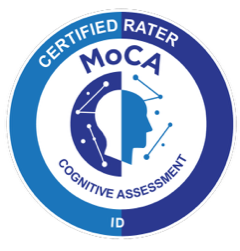Are you confused about which supplements your are taking?
It will come as no surprise to me if you are, as supplementation is a very complex subject. This article. is about B12 which is only available in our diet from animal products so those who are vegetarian and especially vegan will have to supplement with this nutrient.
B12 is an important water soluble nutrient and is required in every cell in in the body. It is involved in normal nerve function, red blood cell production, as an important co-factor in fatty acid and amino acid metabolism and DNA synthesis. Meaning that if you are deficient in B12 it can lead to some widespread signs and symptoms such as:
· Pale Skin
· Weakness, fatigue and light headedness
· Loss of appetite
· Nerve issues like tingling, numbness and muscle weakness
· Impaired Vision
· Hormone and mood imbalance
· Sleep Disturbance
· Reduced immunity
· Cognitive impairment
· Balance problems
There are four type of B12 two of which are active and two which are inactive. If you supplement with either of the inactive forms of B12 the body will have to convert it first into an active forms before it can of use.
The 2 active forms are adenosylcobalamin and methylcobalamin, the inactive forms are cyanocobalamin and hydroxocobalamin. The majority of supplements and medical infusions of B12 available on the market are in the inactive form of cyanocobalamin. Cyanocobalamin has received criticism of late because of the following factors:
- Potential for toxicity as cyanide can be produced during cyano breakdown – which is of particular concern for those experiencing detoxification issues such as in smokers or patients with liver or renal damage
- Requires reduction across four metabolic steps before it can be used
- The conversion of cyanocobalamin to active B12 can be prevented by a number of genetic and metabolic abnormalities
Hydroxocobalamin is also an inactive form but is one of the most predominant forms found in food. While it is also inactive, it does not contain a cyanide molecule and in fact aids the excretion of cyanide in the urine. Interestingly, hydroxocobalamin is commonly used as an antidote in cases of cyanide poisoning (Thompson & Marrs, 2012).
High levels of nitric oxide can contribute to oxidative stress, hydroxocobalamin is able to inhibit nitric oxide above other cobalamin forms (Weinberg et al, 2009). However it is worth noting that during pregnancy nitric oxide aids the control of blood circulation to the foetus so for this reason supplementing with the active forms of B12 during pregnancy is better.
Methylcobalamin is an active form of B12 with a methyl group and is the only form able to cross the blood brain barrier without further metabolism (Okuda et al, 1973). This form is a good option of supplement for the majority of the population due to its distinct neuroprotective effects. It is also recommended for those with certain genetic polymorphisms which make it hard for them to convert the inactive forms of nutritional B12 provided by our diet.
Adenosylcobalamin is the other active form of B12 it is used by the mitochondria in our cells and is an important cofactor involved in energy production. It is therefore a good option for those experiencing severe fatigue or with certain genetic polymorphisms reducing their ability to synthesize B12 from their food.
Obviously these complexities make picking a supplement off the shelf difficult. For most people taking a combination of the active methylcobalamin, adenesocobalamin will be of most benefit.
If you are having problems getting hold of the correct form of B12 on that I recommend regularly is from Cytoplan.co.uk and is available through the following link:
https://www.cytoplan.co.uk/vitamin-b12-sublingual-as-methylcobalamin-adenosylcobalamin
A Hyroxocobalamin is available here:
https://www.cytoplan.co.uk/vitamin-b12-hydroxo-1mg
References:
Thompson JP and Marrs TC (2012) ‘Hydroxocobalamin in cyanide poisoning’, Clin Toxicol, 50(10), pp 875-885
Weinberg JB et al (2009) ‘Inhibition of nitric oxide synthase by cobalamins and cobinamides’, Free Radic Biol Med, 46(12), pp 1626-1632
.
Stay Up to Date - get new blog posts, videos and articles straight into your inbox
Contact Us
Blog Categories










